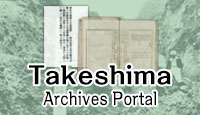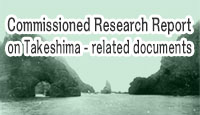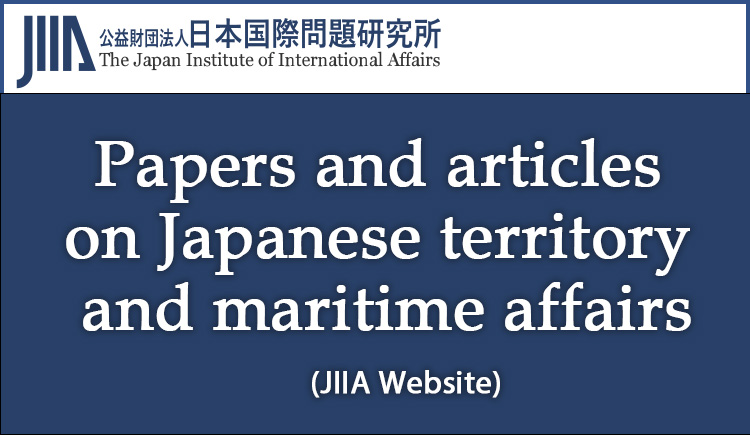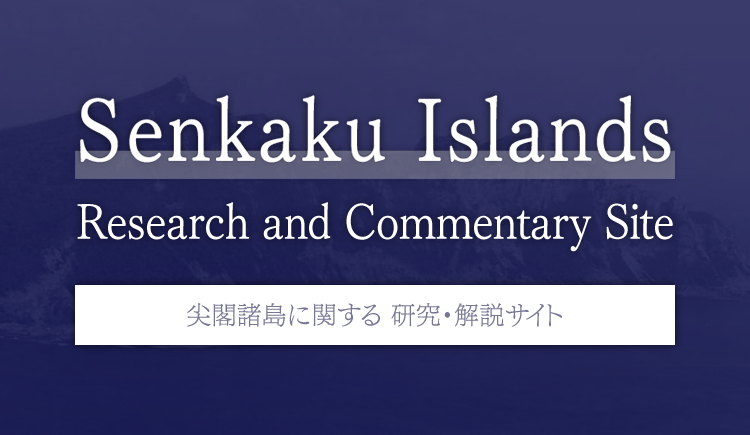The documents and materials published on this website were collected, researched, and prepared with advice from experts, as a part of a Government-commissioned project. The contents of this website do not reflect the views of the Government. Links to external sites (domains other than https://www.cas.go.jp) are not under the management of this site. For linked websites, please check with the organization/group that manages the website for the link in question.
Analysis of claims by other countries
Column Handling of the Takeshima Issue in South Korea’s Social Studies Curriculum
FUJII Kenji (Advisor, Takeshima Issue Research, Shimane Prefecture)
*Adobe Acrobat Reader DC, provided by Adobe, is needed to view the PDF files. If you do not have the software, please download it from the linked site. Adobe Acrobat Reader DC
Introduction
South Korea's National Curriculum are equivalent to Japan’s Curriculum Guidelines. This article examines how the Takeshima Island issue (concerning the island referred to as ‘Dokdo’ by South Korea) has been addressed in South Korea’s social studies curriculum since 2005, when Shimane Prefecture established Takeshima Day.
1. Japan’s moves regarding education on Takeshima
The Ministry of Education, Culture, Sports, Science and Technology (MEXT) stated in the 2008 Commentary on the Curriculum Guidelines for middle school ‘Social Studies’ [Geography], 'It is also necessary to deepen understanding of our country's land and territories, as with the case with the Northern Territories, by mentioning the differences between Japan's and South Korea's claims over Takeshima.' Additionally, in the 2009 Commentary on the Curriculum Guidelines for high schools, MEXT explained, 'The purpose is to teach about Takeshima in the same way as in middle school.' The ministry instructed that middle and high school geography education should foster a deeper understanding of the Takeshima issue.
In South Korea’s 2010 revised social studies curriculum, descriptions of the Takeshima issue were added to middle school history and high school Korean history, whereas previously the issue had been included only in middle school ‘Social Studies’ 〈Geography Domain〉and high school ‘Korean Geography’. This revision appears to have been a response to Japan's policy changes. In the middle school ‘History’ curriculum, the issue was described as follows: 'Establish a correct view of history and a sense of sovereignty by exploring territorial issues, including Dokdo, and historical conflicts with neighbouring countries'. In the 2011 revision of the social studies curriculum, descriptions of the Takeshima issue were also added to elementary school ‘Social Studies’, middle school ‘Social Studies’〈General Social Studies Domain〉, and high school ‘East Asian History’.
In the 2014 revision of the Commentary, descriptions of the Takeshima issue became more detailed in middle school ‘Social Studies’ [Geography]. It stated, 'It is also necessary to properly address the fact that, although it is our country's inherent territory, [...] it has been illegally occupied by South Korea [...] and that Japan has repeatedly lodged protests against South Korea, thereby deepening students' understanding of our nation's land and territories'.
Similar expansions were made in the 'History' and 'Civics' sections, as well as in high school 'Geography/History' and 'Civics' sections. The Commentary emphasised fostering students' understanding of Takeshima as 'an inherent territory of our country,' South Korea's occupation as illegal, the legitimacy of Japan's annexation of Takeshima under international law, and Japan's pursuit of a peaceful resolution to the Takeshima issue.
2. 2015 Revision of the Korean Social Studies Curriculum
In the 2015 revised social studies curriculum, descriptions of the Takeshima issue became more detailed and extensive. There are three key points that merit attention:
First, the phrase 'territorial issues including Dokdo,' which had appeared in the 2010 and 2011 revised social studies curriculum, was removed. This change appears to reflect the realisation that the phrase contradicted the South Korean government’s stance that no territorial issue exists regarding Takeshima. The high school history textbook states, 'Dokdo is an inherent part of our territory, which is historically clear and which we now effectively control. Therefore, we should approach Dokdo not as a territorial issue but as a historical issue.' This statement reinforces the claim that no territorial dispute exists over Takeshima. However, this argument, which is based solely on the current status of illegal occupation, is entirely unacceptable.
Meanwhile, MEXT explained in its 2014 revision of the Commentary that 'With regard to the Senkaku Islands, it is necessary to understand that the Senkaku Islands are an inherent territory of our country, that our country effectively controls them, and that there are no territorial issues to be resolved, together with their location and scope'.
The second point concerns how the Takeshima issue was addressed in elementary school ‘Social Studies’. In the 2011 revised curriculum, the topic was placed under the unit '(1) Our Land is Easy to Live In', but in the 2015 revised curriculum, it was moved to the unit '(8) The Future of a Unified Korea and Global Peace'. The objective of this subject was stated as follows: 'By cultivating a sense of territorial sovereignty over Dokdo, which is our country's inherent territory; examining the efforts and challenges of reunifying the two Koreas; and exploring various cases of global conflicts and the challenges of building a sustainable future, we can envision a unified Korea and foster the attitude of global citizens who strive for peace in global society'. This framing suggests that South Korea envisions expanding its global influence by incorporating both North Korea and Takeshima within its territorial scope.
The third point is the increased emphasis on active learning. For example, in middle school ‘History’, an evaluation method was introduced that required teachers to 'conduct writing exercises in which students refute the assertions of Japan and China and assess them based on the accuracy of data research, clarity of arguments, and consistency of logical development'. In 2017, 2018 and 2020, South Korean middle school students sent letters to middle schools in Shimane Prefecture denouncing Japan’s Takeshima education. These can be seen as instances in which active learning evolved into independent action.
3. Japan’s strengthened education on Takeshima refutes South Korean arguments on the incorporation of Takeshima into Shimane Prefecture in 1905
In the Curriculum Guidelines announced by MEXT in 2017, the elementary school ‘Social Studies’ instructed teachers to 'mention that Takeshima, the Northern Territories, and the Senkaku Islands are our country's inherent territories.' Additionally, in the 2017 Curriculum Guidelines for middle school ‘Social Studies’ [Geography] and [Civics] sections, as well as in the 2018 Curriculum Guidelines for high school ‘Geography/History’ [General Geography] and [Geography Exploration] sections and ‘Civics’ [Public] and [Politics and Economy] sections, stated to address the issues related to Takeshima as Japan’s inherent territory. Furthermore, the Commentary on the Curriculum Guidelines instructed teachers to deepen students' understanding of the Takeshima issue. The Takeshima issue was also mandated to be covered in middle and high school history education. As a result, Japan established an educational system addressing the Takeshima issue from elementary through high school, similar to the framework implemented in South Korea under the 2011 revised social studies curriculum.
In the Commentary on the Curriculum Guidelines for middle school ‘Social Studies’ [History] section (announced in 2017) and for high school ‘Geography and History’ [Exploration of Japanese History] and [General History] sections (2018), the incorporation of Takeshima into Shimane Prefecture in 1905 was explained as follows: 'With regard to Takeshima and the Senkaku Islands, we will also touch on the process by which our country formally incorporated them into its territories based on legitimate grounds under international law, so that students can understand that our country's position on these territories is legitimate both historically and under international law'.
On the other hand, South Korea’s 2015 revised social studies curriculum for middle school ‘History' framed the 1905 incorporation of Takeshima into Shimane Prefecture as part of Japan’s invasion of the Korean Peninsula. Its middle school ‘History’ section stated: 'Understand the process of Japan's usurpation of national rights and the flow of the movement to protect national rights in line with this, and understand that Japan illegally occupied Dokdo.' Similarly, then curriculum for high school ‘Korean History’ stated: 'Understand the problems of Japan’s illegal incorporation of Dokdo and the injustice of the Gando Convention, which was concluded under Japanese rule'. Since there is no evidence that any government on the Korean Peninsula exercised control over Takeshima before 1905, this claim is incorrect; therefore, Japan’s Commentary on the Curriculum Guidelines refuted South Korea’s assertion.
Takeshima
Research and Commentary Site
- I Comprehensive issues
- II Commentary on themes by historical period
- III Analysis of claims by other countries





